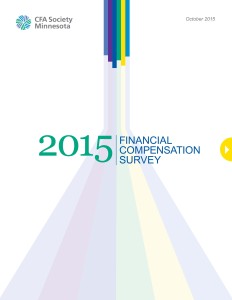Presented by Michael Bird, CFA, Senior Fund Manager, Money Funds, Wells Capital Management and Steven R. Malin, Ph.D., Director, Investment Strategist, US Capital Markets Research & Strategy, Allianz Global Investors
– Lucas Baker, CFA, Wells Fargo
Michael Bird, a senior fund manager for Wells Capital Management’s money market fund strategy and Steven Malin, formerly with the Federal Reserve Bank of New York and currently a director and investment strategist with Allianz Global Investors, discussed liquidity risks in the market, client concerns, regulatory and market factors affecting liquidity and potential sources of liquidity issues in the future. During the interactive discussion moderated by Tyler Carrington also of Allianz, Mr. Bird discussed some of the challenges of managing money funds in a post-2008 world. Alternatively Mr. Malin, leveraging his central bank experience, presented a macro tilt to the issue of liquidity risk and provided attendees with a glimpse into the Fed’s perspective.
Clients have exhibited increasing concern over liquidity risk and have taken a more direct interest in their portfolios questioning the composition of their portfolios to determine if they should diversify into alternative products such as an ultra-short bond fund instead of MMF.
With investors increasingly moving towards investment grade corporates instead of Treasuries, Mr. Malin questioned if the structure of the market had changed and described a seemingly barbell view on liquidity. He said liquidity issues have become more focused on Treasuries on one hand due to programmatic trading and one-way bets, and HY on the other hand due to a smaller universe of investors and higher inherent volatility. In the middle, high grade corporates have exhibited greater liquidity given the large size of deals and significant number of natural buyers.
When asked if and how they were being compensated for liquidity risk, both presenters said that liquidity was addressed during the security selection process. Mr. Bird added that he is currently seeing wider bid-ask spreads and more bid-wanteds driven in large part by the disintermediation of banks.
The discussion turned to regulations and their impact on liquidity. While Mr. Malin, citing his Fed background bias, noted that the financial system was unequivocally safer now than in 2007, Mr. Bird questioned the effectiveness of the SEC’s most recent amendments to prevent runs on money market funds. One unintended consequence has been the significant decline in the repo market due to the disintermediation of banks. Currently, the repo market is half the size it was prior to the financial crisis, requiring money funds to expand the universe of counterparties that funds repo with.
One of the more important discussion points centered on the evolution of trading and its impact on liquidity. Mr. Malin noted that the trading universe is much broader and dominated now by algorithms that move in the same direction, exacerbating price swings during times of increased volatility. Investors attempting to limit risk by “avoiding it” with a passive strategy such as an ETF or “outrun it” with a momentum strategy can find themselves in negative feedback loop as correlations increase along with volatility forcing portfolio managers to sell winners to raise cash and holding onto losers. To manage that risk, Mr. Bird’s company stress tests its portfolios for redemption shocks in addition to the other stress tests it conducts.
Going forward, Mr. Malin sees the continued evolution of trading – i.e. an expanding trading universe with more traders and faster execution – as a potential source of liquidity risk particularly in light of a heterogeneous market vis-à-vis companies, countries and currencies.
Finally, when the Fed finally decides to liftoff, the primary polity tool it will use to raise interest rates will be reverse repo, which could be problematic given current limits to that program. Mr. Bird expects the Fed to remove the current cap on the program to effectuate its policy.






